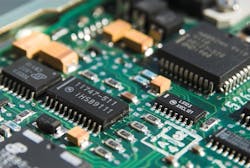What is Supervisory Control & Data Acquisition (SCADA)?
What is SCADA Used For?
Supervisory control and data acquisition (SCADA) is a computer system for gathering and analyzing real time data, according to Webopedia. SCADA systems are commonly used to monitor and control a plant or equipment in the water and wastewater industries, as well as energy, oil and gas refining, transportation and other industrial industries.
Energy-use monitoring and metrics is a common application for a SCADA system, according to Process Solutions. The SCADA system can help operators analyze energy use data taken from connected equipment and use that data to cut costs and energy waste.
SCADA Systems at Work
A SCADA system gathers information, transfers the information back to a central site, and alerts its home station that an issue has arised. Then, after carrying out necessary analysis and control to determine if the issue is in need of immediate remediation, the system displays the organized information.
Although SCADA systems can be straightforward, such as ones that monitor environmental conditions of a small space, others can be complex. Examples of complex SCADA systems are ones that monitor all the activity in a nuclear power plant or the activity of a municipal water system.
SCADA systems may have security vulnerabilities, so the systems should be evaluated carefully.
Why is SCADA important?
A SCADA system usually consists of the following main elements: supervisory computers, remote terminal units (RTU), programmable logic controllers (PLC) and communication infrastructure.
- Supervisory computers are the core of the SCADA system, gathering data on the process and sending control commands to the field connected devices.
- RTUs connect to sensors and actuators, and are networked to the supervisory computer system. RTUs have embedded control capabilities.
- PLCs are connected to sensors and actuators in the process, and are networked to the supervisory system. In remote applications such as a large water treatment plant, PLCs may connect directly to SCADA over a wireless link, or more commonly, utilise an RTU for the communications management. Communication infrastructure connects the supervisory computer system to the RTUs and PLCs.
- Human-machine interface (HMI) is the operator window of the supervisory system and a critical component of SCADA. The HMI presents plant information to the operating personnel.
Where is SCADA used?
Water and wastewater professionals are constantly facing the challenge of finding the right balance between availability and reliability, risks such as cybersecurity and physical security and costs associated with chemicals.
Virtually all water distribution and wastewater collection systems require a SCADA system.
About the author:
Cristina Tuser is Associate Editor of WWD and can be reached [email protected].
